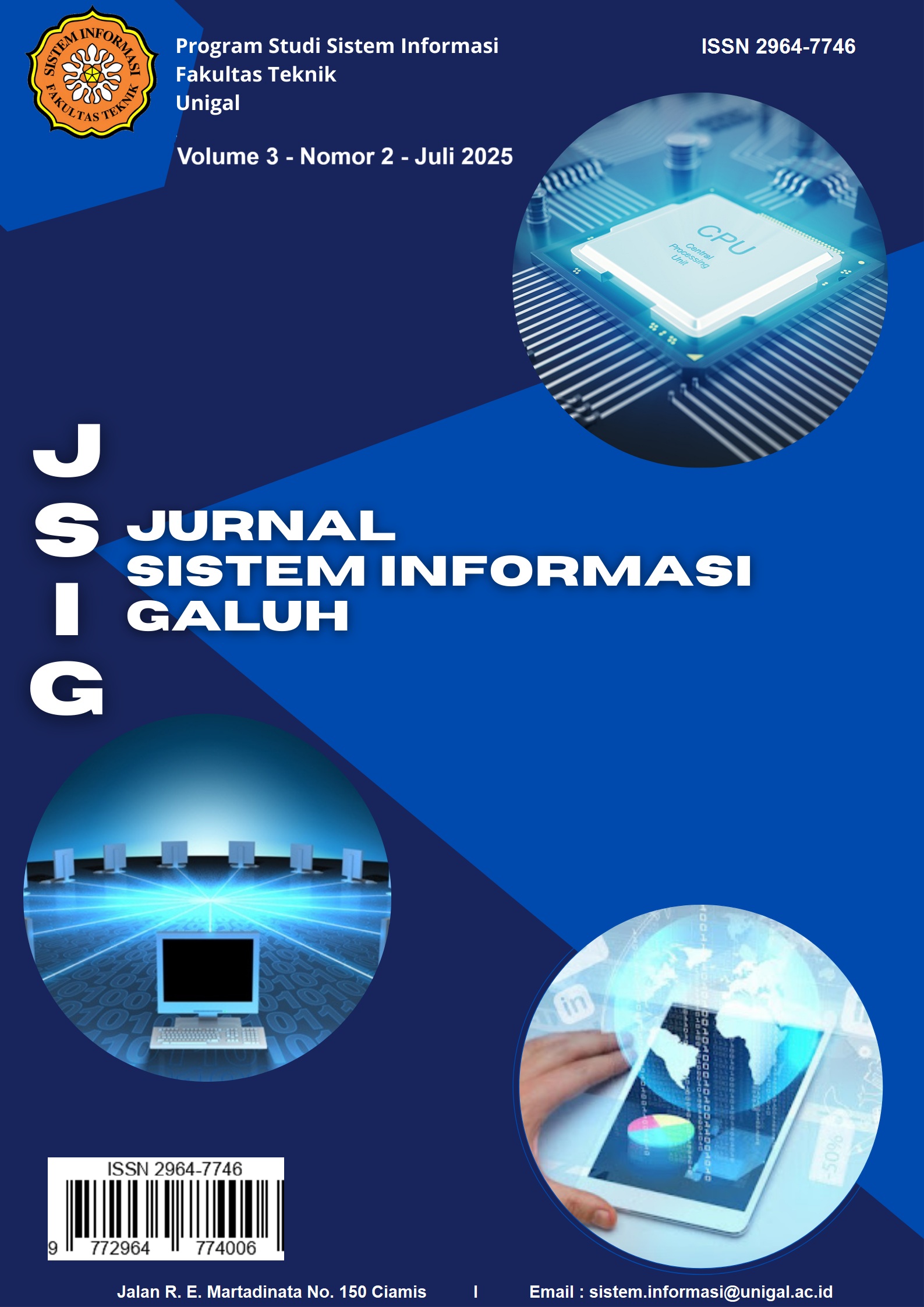RANCANG BANGUN ALAT PEMANTAU DETAK JANTUNG DAN KADAR OKSIGEN DENGAN SISTEM PERINGATAN BERDASARKAN USIA PENGGUNA
DOI:
https://doi.org/10.25157/jsig.v3i2.5034Kata Kunci:
Pulse oximeter, SpO₂, BPM, Arduino Uno, MAX30102, pemantauan real-time, perangkat medis portabel, detak jantung, saturasi oksigen darahAbstrak
Kesehatan kardiovaskular dan kadar oksigen dalam darah merupakan indikator penting untuk memantau kondisi fisik seseorang, khususnya saat melakukan aktivitas atau olahraga. Pemantauan terhadap kedua parameter ini sangat diperlukan untuk memastikan bahwa seseorang tetap berada dalam batas aman untuk melanjutkan aktivitas fisik. Oleh karena itu, dibutuhkan sebuah alat portabel yang mampu mengukur saturasi oksigen dalam darah (SpO₂) dan denyut jantung (BPM) secara akurat dan real-time. Penelitian ini bertujuan untuk merancang dan mengembangkan perangkat pulse oximeter berbasis mikrokontroler Arduino Uno dengan menggunakan sensor MAX30102, dilengkapi dengan lampu indikator LED serta keypad sebagai antarmuka input pengguna. Pengguna dapat memasukkan data usia melalui keypad, dan sistem akan menghitung BPM maksimal sebagai batas aman untuk beraktivitas fisik. Lampu LED berfungsi sebagai indikator visual untuk memberikan sinyal apakah nilai SpO₂ dan BPM pengguna berada dalam kisaran normal. Hasil pengujian menunjukkan bahwa alat ini mampu mengukur kadar oksigen dalam darah dengan tingkat akurasi sebesar 99,97% dan denyut jantung dengan akurasi sebesar 98%. Dengan ukurannya yang ringkas, alat ini memiliki potensi untuk digunakan secara praktis dalam berbagai situasi, baik oleh individu maupun tenaga medis sebagai alat pemantauan kesehatan awal.











